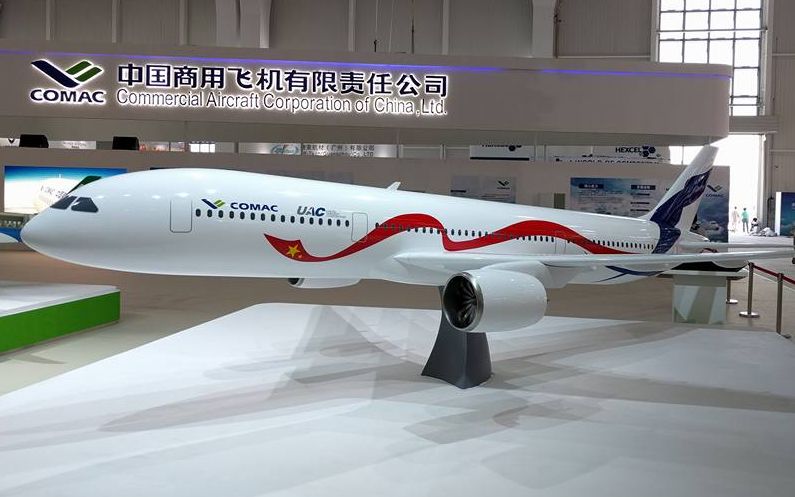This is the first official concept art of the new Sino-Russian jumbo jet, which can seat up to 280 passengers (stretched versions can probably carry 350 passengers).

China and Russia are taking their high tech relationship to the next level, as the preliminary design for their jumbo jet will be completed by July. The C929 will be China’s ever largest civilian aircraft, and Russia’s largest post-Cold War jetliner.


Chartered Air Force One
Currently, Chinese presidents charter Air China (China’s flag carrier) Boeing 747s to take them aboard, such as this visit by then President Hu Jintao to Mexico in 2005. In the future, the C929 is likely to be the first aircraft to serve as a permanent airliner for China’s future leaders.



为什么中国要与俄罗斯联合研制C929大型客机,此前的C919是由我国商飞自主研制,C919属于窄体单通道客机,我国此前研制单通道客机积累了足够经验,中国此前从未涉足过宽体客机的制造,缺少相关经验,俄罗斯作为航空制造老牌强国,有宽体客机的制造基础。此前前苏联就研究了一款名为伊尔96的自发大型喷气式客机,指标上接近空客A340与波音777,但性能上仍有较大差距。虽然俄罗斯后来改进了伊尔96,但由于经费不足最终退出国际舞台。如今,无论是俄罗斯想重回历史舞台,还是中国要实现从无到有的探索,中俄联合无疑是打破欧美垄断的最佳选择。
伊尔96

China and Russia have $20 billion partnership to replicate Airbus history and make competitive jets China, Russia and some western suppliers are teaming up on a $20 billion project to replicate the success of Airbus and achieve a major breakthrough into the passenger jet market. The China-Russia Commercial Aircraft International Corporation Limited (CRAIC) 50-50 joint venture was launched on May 22, 2017 in Shanghai, targeting a 2025-2028 maiden flight and first delivery. It aims to take 10% of a market dominated by Boeing and Airbus of 9,100 widebodies over 20 years through 2035, with a plane 10-15% cheaper to run.… Read more »
FAA Enhances China Aviation Safety Partnership 2017, October 27 –The Federal Aviation Administration (FAA) and the Civil Aviation Administration of China (CAAC) today announced the signing of an implementing agreement under the U.S. – China Bilateral Aviation Safety Agreement (BASA) recognizing each other’s regulatory systems with respect to the airworthiness of aviation products and articles. The Implementation Procedures for Airworthiness (IPA) document allows each authority to leverage approvals completed by the other with respect to design, production, and airworthiness as well as continued airworthiness. The agreement uses the compatibilities of the two authorities’ certification systems and fulfills the commitment that… Read more »
It will be called CR 929
5月22日,中国商飞(COMAC)与俄罗斯联合航空制造集团(UAC)的合资企业——中俄国际商用飞机有限责任公司(CRAIC)在上海成立。合资公司主要负责中俄联合研制新一代远程宽体飞机项目的运行工作。
http://slide.mil.news.sina.com.cn/k/slide_8_193_51457.html#p=1
http://slide.mil.news.sina.com.cn/k/slide_8_82345_46373.html
C929 mock up